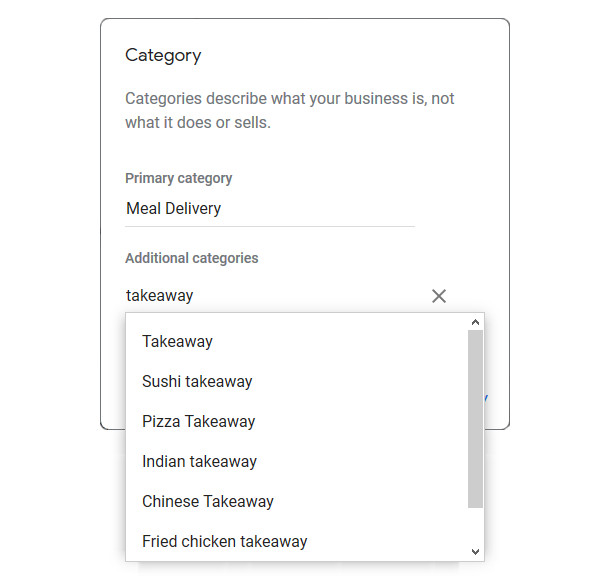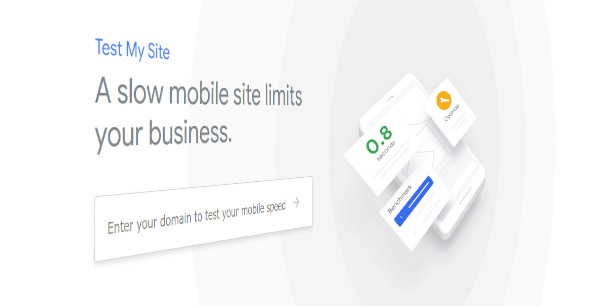Many businesses would love to dedicate more time to embrace every possible online optimisation. But the business of running a business usually takes precedent, and you know what that means: understanding how to improve your search experience doesn’t mean you magically have the time to make it happen.
Now with many businesses temporarily closing during COVID-19, it might just be the ideal time to reprioritise your marketing to-do list. Rather than simply waiting out the crisis and returning to business as usual, use your time wisely, optimise your local search experience, and come out of the pandemic in better shape than your competition.
Here are our top 13 local search tactics that all businesses should be thinking about—especially if your day-to-day is slower than it once was.
-
Improve your business’s website
Let’s start with one of the largest tasks, but one with the most benefits. There is no better time than now to revamp your business’s website, including labour-intensive tasks such as localising your content and displaying first-party reviews. Improving your website now will mean better rankings once people return to a normal state.
It is also worth noting that Google greatly prefers businesses with local pages for every location. If you have not built out a local page for each of your locations, now is the time to do so. Linking between your Google listings and these local pages—with corroborating names, addresses, and phone numbers—will give you a significant SEO boost. Attaching UTM tracking to your Google My Business (GMB) links will also help you better track the customer journey users follow through to conversion.
-
Improve your mobile site experience
Site isn’t mobile responsive? This could be a great opportunity to bring it up to speed—literally. Your mobile page speed must be within acceptable limits, especially seeing as Google says 53% of visits to mobile sites are abandoned if it takes 2.5 seconds or more to load.
On top of that, in 2019 Google switched to a mobile-first ranking of websites on its results pages. A fast mobile page speed is important both to rank on searches and to retain leads once they click on your website. Plus, as consumers are spending more time online due to isolation (desktop and laptop), ensuring your mobile experience is just as good will help you once people return to normal (mobile!) life.
-
Improve your listing images
Many businesses have a default street view as their main images. This is both unappealing to customers and misses out on potential SEO benefits. In contrast, having a multitude of images of both the interior and exterior of your business can greatly improve your rankings and conversion rates.
This is not just a matter of looking professional. Google’s Vision AI looks at the content of your images and uses those to match your business with appropriate queries. It can identify the contents of an image, including corporate logos and displayed products—so it has the capability to identify both your business’s branding as well as things you may sell, such as phones or sunglasses. In fact, the AI is far more advanced than you would think and you can even test it out for yourself. Upload an image of a classroom full of students and it will identify key factors such as “learning”, “children”, and “chalkboard”. It can successfully identify from the images that you are a tutoring service for primary school students.
A strong set of images showing every aspect of your business can help you rank significantly higher for relevant queries. So, spend time now collecting and uploading all of these images now.
-
Ensure you have all secondary categories activated
Google allows your business to have one primary category and up to nine secondary categories for your business. There is little reason why you should not fill in all nine potential secondary categories if they could be applicable to your business. Google does not punish you for a long list of categories but you could be missing out on leads if you do not apply them.

Find every category that could apply to your business. Run an art store? You may be surprised at the number of parallel categories, such as Art Café, Art Centre, Art Dealer, Art Gallery, Art Handcraft, Art Studio, and Arts Organisation.
-
Prepare all your special links and amenities for reopening
Google has a slew of unique links you can include on your GMB listings which both improve the customer experience and improve your rankings, including special fields such as menu links, appointment booking URLS, product and service links, and delivery options. Many of these are most beneficial to restaurants, but booking URLs and product and service links do not have to be. Businesses such as automobile service centers can list menus with items, such as typical costs for oil changes.
Every business should also submit their amenities. If you’re a restaurant, what type? Do you offer disabled access? Is your restaurant child-friendly? Do you offer WiFi? Spend the time now to ensure that all of your applicable amenities are properly entered into all sites that accept them. All of these special fields and amenities should be optimised where they can to make your business look more legitimate to customers—and make Google happy that you are using their features.
-
Report spam listings
All industries contain spam listings but some are more susceptible than others. Industries such as locksmiths and plumbers often contain dozens of fake listings which only have the purpose to steal leads and sell them back to you. By searching for “plumbers near me” or any other relevant terms near your business listings, you can easily identify high-ranking-but-fake businesses stealing your business.
Once these listings have been detected by a manual search, they can just as easily be removed with manual flagging. If your business is ranking below spam listings in the 3-pack, reporting them is absolutely easiest way to immediately improve your business’s ranking.
-
Report spam images, reviews, and Q&A
When searching for spam listings that rank above your own, it is also a good time to search for spam within your own listings. Images uploaded by users, inappropriate reviews, and unnecessary questions in your Google Q&A are all places where spam can be weighing your listings down.
Just as for spam listings, a simple flagging and reporting to Google will have the offending information removed and your rankings improved. Tidy up your listings to ensure you are presenting the best possible user experience.
-
Remove duplicates
Google often generates business listings before the business itself establishes a GMB account. This is why there are plenty of “unclaimed” listings on Google Maps. Your business may have a duplicate listing due to these automatically generated listings. There may also be obsolete listings from what business resided at your address before you began working at the property.

These duplicate listings give conflicting information to Google, which lowers your rankings. Contrary to popular belief, having a redundant listing of the same business will not be a cheeky way to increase your exposure. When looking over spam in your listings, reporting duplicates is another way to immediately increase your rankings.
-
Generate a product feed and utilise Google’s “see what’s in store”
Much like Facebook’s product feed, Google allows retailers to give a direct connection to their inventories through Google’s Merchant Centre. The benefits of establishing this product feed can be enormous—from having your products display for free in organic search results to using the Google-hosted local storefront.
Uploading your entire inventory into Google can be a daunting task, which makes it ideal for a time when you’re not otherwise burdened with your usual day-to-day business activities. It may also have the added benefit of increasing your online sales as consumers looking for certain products see they are available from your brand. This is a great tactic for now and for when consumers go back to in-store shopping.
-
Prepare for reviews to return to Google
Many Google My Business features are temporarily unavailable due to COVID-19. But they remain incredibly important to a business’s success, and now is the time to consider ways your business could generate more positive reviews when things return to normal.
There are simple things that can be done, such as posting physical signs at your place of business reminding users to leave reviews. If you have email information from your customers, you can also contact them to ask for reviews in the same manner. For many stores that offer online purchases, there are ways to automate the process of asking for reviews in a certain time frame following a purchase.
If you already have a review generation process in place, it would make sense to switch from generating Google reviews to Facebook, Yelp, or a relevant niche directory like TripAdvisor. You don’t have to pause your reputation management process right now if you have a solid one in place. Instead, pivot your efforts to sites that haven’t shut down new reviews.
-
Improve your listings on websites other than Google
Bing, Apple Maps, and Facebook have nowhere near the search traffic that Google does, but remember that proper citations on tier 1 websites improve your rankings on Google itself. There are only a handful of these tier 1 websites that will impact your Google rankings, and you can easily manage them amid COVID-19. For instance, Bing and Apple only require the same information you already have on your GMB listings, plus a handful of additional fields pertaining to things like Apple Pay. You would be surprised how many listings across websites have small errors such as an incorrect digit on a phone number. These small errors are considered conflicting information, leading to lower rankings.

Facebook has an even greater impact, so make sure you have all of your locations listed. By adding the “store” tab to your brand Facebook page, you can ensure that all of your locations are listed on a very valuable citation source. By ensuring that your Facebook store locator is accurate, it will give a great boost to your overall local SEO.
-
Explore other link-building opportunities
Take a look at suppliers, partners, your local community, and anywhere else and use this time to reach out for a link back to your website. Every backlink from a high-quality site is a boost to your SEO—and they aren’t only valuable in high volumes. Searching out each individual link opportunity is time consuming, but if you find yourself with the opportunity to do so, these potential backlinks can be a worthwhile pursuit.
You can also spend this time creating content that will generate these links organically. Your brand is the authority on what you sell, so produce content that warrants being linked to. Boosting your link profile during this downtime could be worth its weight in gold moving forward.
-
Expand your social presence
Has your business ever considered Instagram, Twitter, or LinkedIn before? Now is the time to look into such marketing avenues as both customers and business owners have time to experiment and explore. Many businesses also have out-of-date social media pages. These are often linked via the Google knowledge panel, leading to curious users clicking—and ending up on an abandoned page.
It’s a very good time to either revive those old social media pages or remove them completely so as to not direct users to obsolete information. Even if your business is currently closed due to COVID-19, there is an opportunity to get your brand messaging out to your consumers. Providing them value now could lead to them staying consumers in a post-pandemic landscape.
There are plenty of ways to stay on top of your game in local search. Some are simple while others take time and expertise. With normal life on hold for now, there’s no better time to focus on local, take the time to get it right—and hopefully come out of the crisis in better shape than ever.





